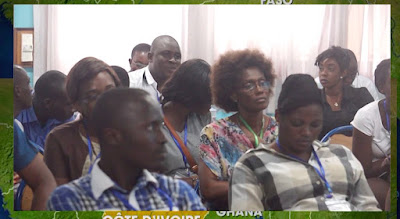In our first post in this series, we argued that even if cash is disappearing (which it may not be, at least not completely, and at least not any time soon!), it’s important to analyze the stuff of money, its material infrastructures and entailments. In this post, we look at one example. In keeping with our museum catalog concept, we’ve selected an example that is particularly difficult to curate.
 |
|
Image courtesy of Amy Hennessy, Atlanta Federal Reserve
|
The Automated Clearing House (ACH) is the electronic backbone of the payments system in the United States. It is the network that clears and settles transactions between member banks whenever an employer directly deposits a paycheck into an employee’s account, whenever a mortgage payment or utility bill is automatically deducted, or whenever you use PayPal linked to your bank account to make a payment. It is one of the core systems of the payments industry, the vast, vital yet little understood network of government, corporate and nonprofit entities that helps the money move in physical and digital space. In fact, over the past couple of years there’s been a revolution in how the ACH operates, so that payments can move faster, approaching real time settlement. It’s a big deal but something you probably don’t think about every day, if ever.
You can’t “see” the ACH. There are servers and cables and electronic files and file transfer protocols; there are rulebooks and codes. Codes like:
| R14 | Representative payee deceased or unable to continue in that capacity | The representative payee authorized to accept entries on behalf of a beneficiary is either deceased or unable to continue in that capacity |
Imagine you are a museum curator from the future. You have been tasked with creating a gallery about this thing called “money” that people used to use to keep track of debts and to pay taxes to support the common welfare through the institutions of the state. You look into the history records and find that this ACH thing was really, really important: accounting for over 80% of the electronic value transferred in the United States in 2016 (Federal Reserve Payments Study 2016).
Now how are you going to curate that?
The Atlanta Federal Reserve has tried to imagine how our future curator would capture the ACH. Off to the side of its main money gallery is its slightly tongue in cheek “Museum From the Future of Money”—you are greeted by a large flat screen on which appears a woman in full body unitard who intones the story of how people in the distant past of the 20th and 21st centuries paid for goods and services using different tools and techniques. Slightly tongue in cheek side. Objects are reverently displayed on black velvet under glass—a coin, a paper check, a credit card… and a laser printed piece of paper illustrating an actual ACH transfer.
This object would normally be a piece of sensitive garbage headed for the shredder. Lost to history forever.
What does its curation inspire?
Fieldwork story: We are at a bar in Las Vegas during Money2020, an annual payments industry conference. We are with a new friend, drinking and debriefing on the day’s presentations of the latest in fintech, developed by financial and payment technology startups as well as the dominant players (Visa, PayPal, but also FirstData, Fiserv and other not-so-household names that operate behind almost all electronic payments). There had been a lot of griping on the day’s panels about the US Federal Reserve’s slowness in embracing fintech, and about the ACH’s slowness in advancing “faster” payments—as close to real-time settlement as possible.
We were getting a little drunk. We asked our new friend:
“The ACH is a) good; b) bad; c) awesome!”
Without missing a beat, she replied: “AWESOME!!”
Why is the ACH so awesome? As we said, it’s the backbone of payments in the US. Almost all new payment systems use it in one way or another. Federally mandated and majority owned by the Fed, it is managed by a consortium of banks and governed by a not for profit association, NACHA (formerly, the National ACH Association).
Is it a public good? It certainly behaves like one. Is it a utility? Hard to say. It’s ubiquitous in the US payments landscape even if it is hidden from view. It’s awesome!
One of our hopes in assembling Paid is to shed light on payment infrastructures, their weirdness, their politics, their awesomeness, in all senses of the word.
For original post - https://socfinance.wordpress.com/2017/06/28/blog-series-from-bill-maurer-and-lana-swartz-post-2-curating-the-new-and-old-stuff-of-money/
Professor Maurer will be virtually presenting on the "Data and New Technologies" session this coming July 2nd in Basel, Switzerland at the “Money, Debt and New Technologies in Africa” Workshop, organized by the Council for the Development of Social Science Research in Africa (CODESRIA) in collaboration with IMTFI and the Centre for African Studies Basel (CASB). Join the conversation! Click here for program information.




